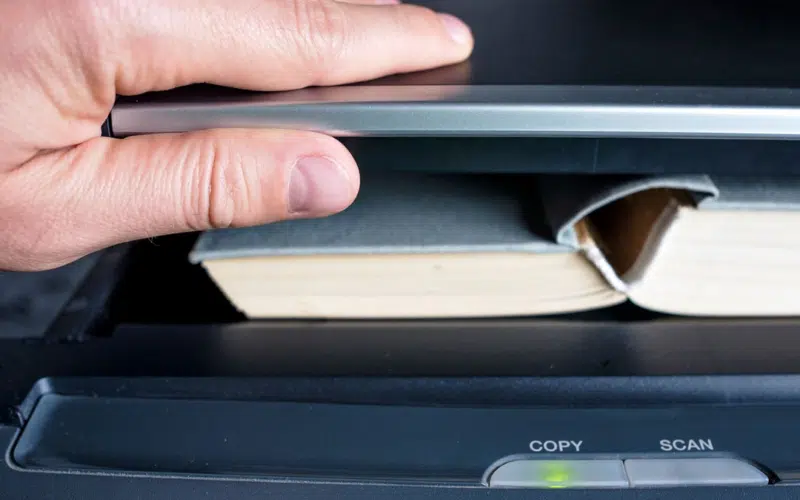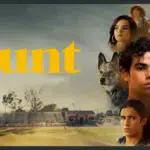The future of “controlled digital lending” is in doubt after a court rules that the Internet Archive’s online library is not protected by fair use.
A New York federal judge has ruled in favor of four leading U.S. book publishers, rejecting the Internet Archive’s argument that its practice of scanning and lending digital copies of books qualifies as fair use under the Copyright Act. The court’s opinion (read here) was as quick as it was decisive, coming just four days after the parties argued cross-motions for summary judgment in the case. As the publishers’ lawsuit now proceeds to the damages phase—and the inevitable appeal— libraries have been forced to rethink the practice of “controlled digital lending.”
What is Controlled Digital Lending?
Controlled digital lending (CDL) is a model by which libraries scan physical copies of books they’ve legally acquired and then make the resulting digital versions available for borrowing. When the electronic version is “checked out,” the physical copy is taken out of circulation. Once the loan period expires, the electronic book is “returned” to the library and becomes inaccessible to the person who checked it out. The theory behind CDL is that by maintaining a consistent “owned-to-loaned” ratio between physical books and digital copies, libraries can meet the needs of twenty-first-century patrons without violating existing copyright law.
At least, that’s the theory.
In practice, one key aspect of CDL leaves it vulnerable to legal attack. Despite its name, controlled digital lending doesn’t merely involve lending, but copying as well. If libraries could lend electronic works without copying them, they surely would, but they can’t. It’s just the nature of the digital format. Books are copied when they’re scanned and converted into electronic files in the first instance, and at least one additional copy is made when the file is accessed or stored on a patron’s computer or e-book reader.
The reproduction aspect inherent in CDL also highlights an important legal distinction between digital works and traditional print works. Physical books that have been lawfully acquired are subject to the Copyright Act’s “first sale doctrine,” which means that any particular copy of a physical book may be sold, given away, or loaned out without permission from the copyright owner. However, the first sale doctrine only provides an exception to a copyright owner’s distribution right. It doesn’t apply to the reproduction right.
Still, advocates of CDL maintain that so long as libraries only scan and lend books they own, ensure a one-to-one owned-to-loaned ratio, and employ digital rights management tools, the practice qualifies as fair use under existing copyright law. CDL opponents counter that a library’s purchase of a physical book doesn’t legally entitle it to produce and distribute digital copies of those books.
Internet Archive’s “Open Library” Project
Historically, copyright owners haven’t pursued infringement actions against the relatively few libraries that have implemented some form of CDL, leaving the model legally untested in court.
This all changed in June 2020, when four of the largest book publishers (Hachette, HarperCollins, John Wiley & Sons, and Penguin Random House) filed a copyright infringement lawsuit in the Southern District of New York against Internet Archive (IA).

IA is probably best known for its Wayback Machine, which allows you to view old versions of websites and laugh at what passed for user interface design in the late 90s.

Crawling websites isn’t all that IA’s been up to. Over the past decade, the San Francisco-based nonprofit has also scanned millions of print books and made the resulting electronic versions publicly available on archive.org and openlibrary.org.
IA’s Open Library project includes millions of public domain books that users can download and read without restriction. It also includes 3.6 million additional books protected by valid copyrights. As to these books, IA claims that it performs the traditional function of a library by adhering to CDL principles: legally acquiring a physical book, creating a digital copy, and only simultaneously loaning the number of copies it’s legitimately acquired.

As the demand for access to digital versions of books increased, IA began partnering with libraries to “contribute” the number of their print copies of a book toward the number of lendable copies on IA’s site. For example, if IA owned one non-circulating print copy of a book, and three partner libraries each signed up to contribute a copy, IA would lend its digital copy of the book to a maximum of four users at a time.
In March 2020, the Covid-19 pandemic closed libraries nationwide and, by IA’s estimate, took 650 million print books out of circulation. Judging itself “uniquely positioned to be able to address this problem quickly and efficiently,” IA launched what it called the “National Emergency Library” (NEL). NEL essentially took the “controlled” out of controlled digital lending. Instead of enforcing a one-to-one owned-to-loaned ratio, IA allowed up to 10,000 users at a time to borrow each of its books.


To be honest, I didn’t know that controlled digital lending was even a thing until 2020, and that’s only because of the publicity generated by the NEL and the publishers’ resulting lawsuit. While the publishers’ complaint was filed while the NEL was in still effect, the lawsuit takes issue with IA’s entire digital library project.
Hachette v. Internet Archive
Fast forward to nearly two years of extensive discovery in the case, after which both sides filed cross-motions for summary judgment. These motions were decided in an opinion issued by District Judge John Koeltl on March 24, 2023.
The court had no difficulty finding that the publishers had established a prima facie case of copyright infringement, as IA didn’t dispute that its digital library project implicated the exclusive rights of reproduction, adaptation, distribution, public performance, and display. Instead, IA argued that its conduct was protected by fair use. This was the focus of the parties’ summary judgment motions, as well as the numerous third-party amicus briefs submitted in the case.
Fair Use
To say that Judge Koeltl didn’t buy IA’s fair use argument would be an understatement. He swiftly found that all four fair use factors weighed strongly in favor of the plaintiff publishers.
The Purpose and Character of the Use
On the first factor (the purpose and character of the use) Judge Koeltl held that “[t]here is nothing transformative about IA’s copying and lending” of the books at issue. “IA simply scans the Works in Suit to become ebooks and lends them to users of its Website for free.”
The court distinguished the Second Circuit’s HathiTrust and Google Books cases, both of which also involved scanning entire books. In those cases, the Second Circuit held that the creation of a “full-text searchable database [was] a quintessentially transformative use” because “the result of a word search is different in purpose, character, expression, meaning, and message from the page (and the book) from which it is drawn.” For example, Google’s Book Search tool offers a “snippet view” which displays only certain limited passages from a scanned book, which the court found to be very different from making an entire digitized version accessible to the public.
Judge Koeltl also rejected IA’s argument that it “expanded the utility” of the books at issue by making their delivery more efficient and convenient. This argument may have carried more weight had IA’s library been limited to scanned books that don’t have electronic equivalents. But because the books at issue in the lawsuit were all available in authorized electronic editions, the judge found that IA’s digital copies “merely replace those authorized by the Publishers.”
The first fair use factor also directs courts to consider whether the secondary use “is of a commercial nature or is for nonprofit educational purposes.” Here, IA argued that its status as a nonprofit and the fact that it doesn’t charge users to borrow its books weighed in favor of fair use. The court found that even though IA doesn’t make a monetary profit, it still exploits the publishers’ works to achieve other benefits, such as attracting new members, soliciting donations, and bolstering its standing in the library community.
These sorts of non-monetary benefits are broad and amorphous, and they seemingly apply equally to traditional libraries. While the court didn’t come out and say so, the subtext of the opinion seems to be that Internet Archive isn’t really a library. While that’s debatable, evidence such as testimony from IA’s Director of Finance that “every single page of the Archive is monetized” certainly didn’t help the defendant’s cause.

The Nature of the Copyrighted Work
The court found that the second fair use factor (the nature of the copyrighted work) also weighed in favor of the publishers. Many of the 127 books at issue in the lawsuit are novels and other highly creative works, and even the non-fiction books at issue feature subjective descriptions of their subjects and other expressive elements. IA rather weakly argued that because most of the works were published more than five years before IA copied them, it hadn’t interfered with the authors’ right to control the first public appearance of their expression. The court wasn’t having it, tersely noting that “[p]ublished works do not lose copyright protection after five years.”
The Amount and Substantiality of the Portion Used
Likewise, the judge held that the third fair use factor (the amount and substantiality of the portion used) favored the publishers given that IA copied the entirety of the works and made them available for distribution. While noting that copying an entire work is sometimes necessary to make fair use of the work, that wasn’t the case here, as IA’s e-books compete directly with the publishers’ licensed electronic editions.
The Effect of the Use On the Potential Market
Finally, as with the other three factors, the court found that the fourth factor (the effect on the market) strongly favored the publishers. Judge Koeltl’s opinion pointed to a “thriving ebook licensing market for libraries” which generates “at least tens of millions of dollars a year for the Publishers.” In addition to offering users complete electronic editions of the works at issue without paying a license fee, IA also provided libraries with an alternative to buying digital licenses through its Open Libraries project.
IA argued that the thriving e-book market demonstrated that the publishers hadn’t suffered any market harm from its digital library, but the judge wasn’t buying that either. He also rejected as irrelevant the fact that IA and its partner libraries once purchased print copies of all the works at issue: “The Publishers do not price print books with the expectation that they will be distributed in both print and digital formats.”
“At bottom, IA’s fair use defense rests on the notion that lawfully acquiring a copyrighted print book entitles the recipient to make an unauthorized copy and distribute it in place of the print book, so long as it does not simultaneously lend the print book. But no case or legal principle supports that notion.”
Hachette v. Internet Archive
What’s Next for the Case?
On April 7, the parties will submit proposals for the appropriate procedure to determine the judgment to be entered in the case. The plaintiff publishers will likely seek statutory damages under the Copyright Act, as well as an injunction that may spell the end of IA’s Open Library project, at least with respect to the non-public domain works in its collection.
Meanwhile, less than 24 hours after Judge Koeltl issued his decision, IA announced that it would be filing an appeal. This isn’t surprising. The case was always headed for the Second Circuit regardless of which side prevailed in the district court. But with such a strong rebuke, not only of the National Emergency Library but IA’s entire digital library project, more traditional libraries are left to determine whether their own CDL practices may be at risk.
What’s Next for Controlled Digital Lending?
There are a number of distinctions that can be made between IA’s digital library and “traditional” taxpayer-funded public libraries or university-affiliated research libraries. For starters, most libraries that utilize some form of CDL aren’t storing physical books in shipping containers and only lending digital copies. They aren’t affiliated with for-profit used bookstores that pay a commission for book sales generated by the library. And they aren’t digitizing their entire collections en masse and lending them to anyone with an Internet connection and an email address.
But are any of these distinctions legally relevant?
The language used by the district court in its decision cuts very broadly. Contrary to some reports I’ve read, the court’s opinion wasn’t limited to the National Emergency Library, which loosened restrictions on the owned-to-loaned ratio during the height of the pandemic. The court was very clear on this point: “Even full enforcement of a one-to-one owned-to-loaned ratio . . . would not excuse IA’s reproduction of the Works in Suit.” And while a library may not decide to employ CDL for all of the physical works in its collection, each book that it does choose to include isn’t merely being loaned—it’s being copied and distributed in its entirety.
Because electronic books can’t be loaned without creating a new copy of the work, the first sale doctrine doesn’t provide legal justification for CDL under existing copyright law. In addition, authorized e-books aren’t “sold” at all; they’re licensed. While most publishers offer electronic library licenses, in some cases these licenses need to be renewed—and paid for—every two years. This means that publishers have been able to treat electronic books more like subscription-based software than items of personal property.
These are all nuanced and important issues. They should be discussed and debated at a legislative and policy level. But as far as the courts are concerned, IA’s “National Emergency Library” program was simply an invitation to be sued and was ultimately counterproductive. While IA was successful in rallying a number of libraries and library advocacy groups to its cause, IA’s cavalier attitude towards digital lending hasn’t helped the libraries’ own cause.
Had IA not removed the “controlled” from controlled digital lending; had it limited its library to out-of-print books or books for which no alternative electronic version was available; had it attempted to negotiate with book publishers instead of picking a fight with them—libraries would have been better off. Instead, they’re left with a record that’s going to be tough to overcome on appeal.
Of course, that’s just what I think. As always, I’d love to know what you think. Let me know in the comments below or @copyrightlately on social media. Also, go pay a visit to your local library.
View Fullscreen






1 comment
One takeaway: novel applications/extensions of copyright law rarely win.